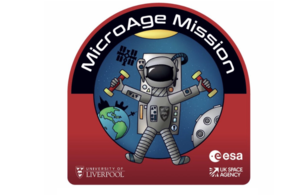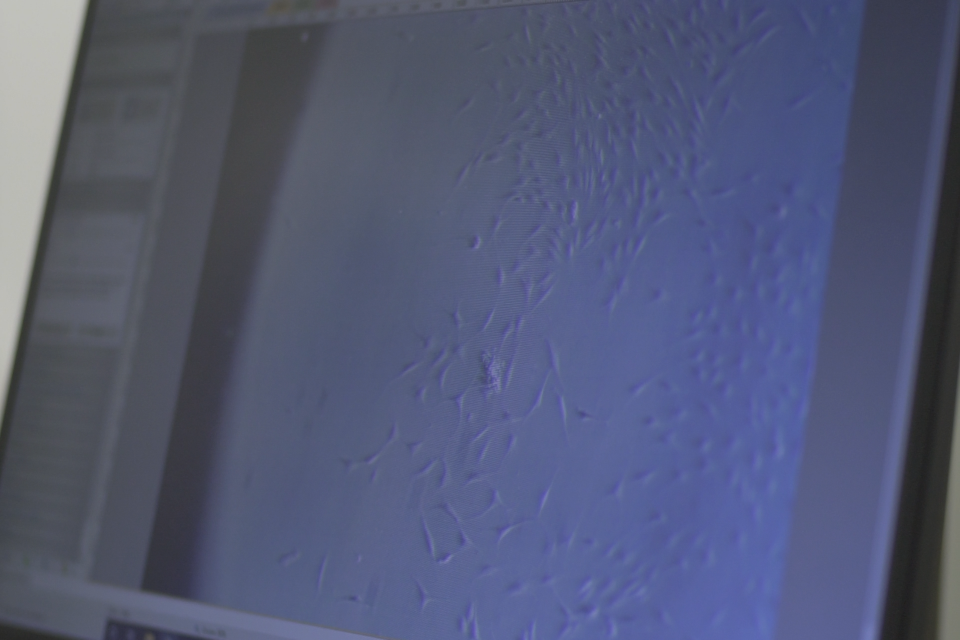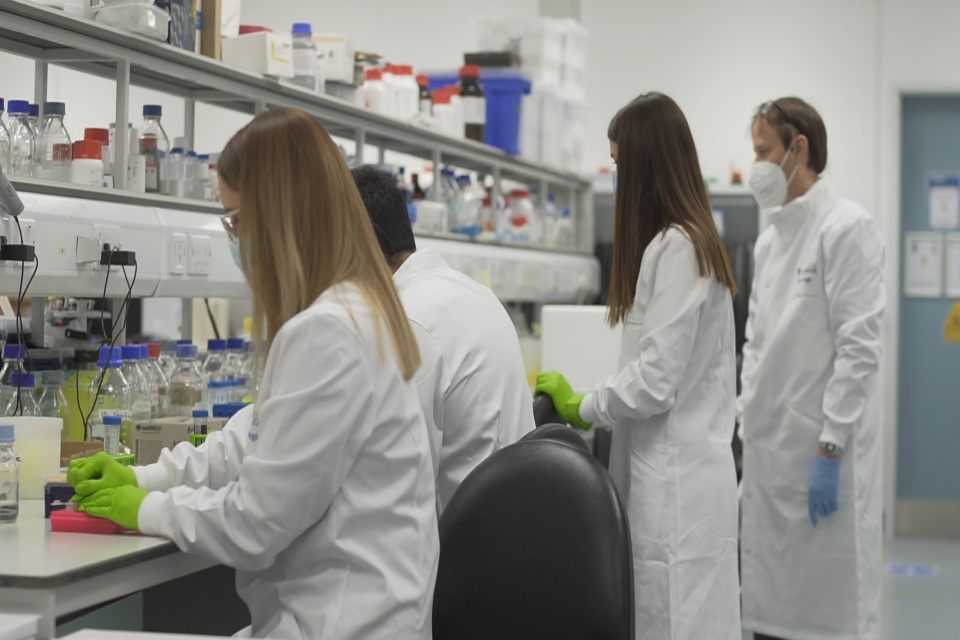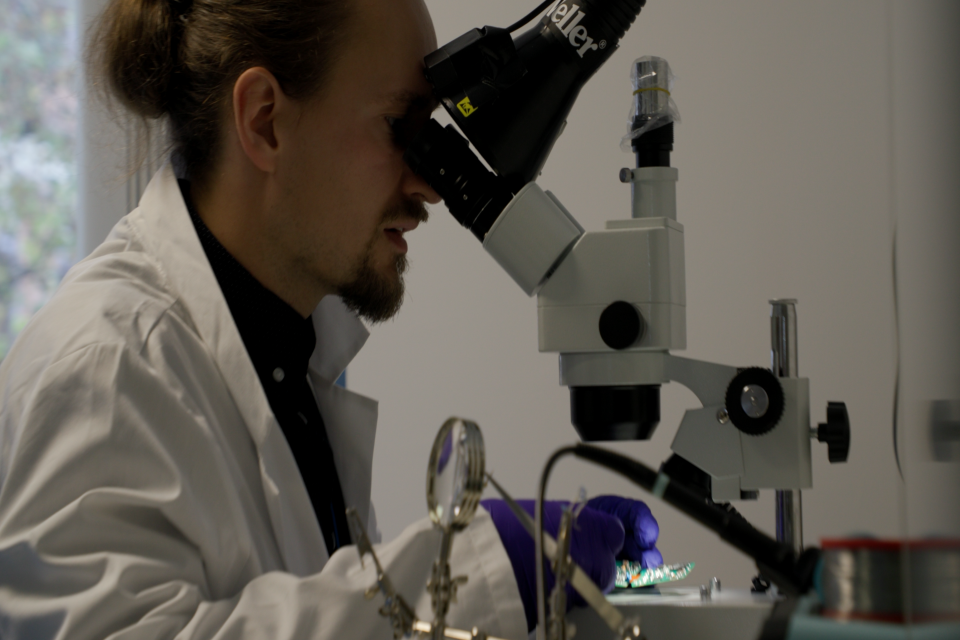A government-backed experiment which could help people live longer, healthier lives is set to launch to the International Space Station on Tuesday 21 December.

MicroAge mission patch
Scientists at the University of Liverpool, funded by the UK Space Agency, are using space to understand what happens to human muscles as we age, and why.
When astronauts spend time in space, without the effects of gravity, their muscles get weaker, just as they do in older age, before recovering when they return to Earth. By studying what happens to muscle tissue in space, the team can compare the findings to what happens on Earth.
This will help the solve the puzzle of why muscles get weaker as we age and look at ways to prevent it.
Science Minister George Freeman said:
As we get older, our bones and muscles get weaker, but scientists don’t
fully understand how this happens.
The research of our scientist astronauts like Tim Peake on muscle loss in the microgravity of space is helping identify potential cures for musculoskeletal disease, which causes agony to millions and costs the NHS billions.
By harnessing the unique environment of the International Space Station our pioneering scientists could help us all live healthier, stronger lives.
It is well known that our muscles lose mass and strength as we age. This can have a profound effect on the ability to carry out everyday tasks and causes a range of problems, including an increased risk of falling and longer recovery times from injuries.
This new experiment, called MicroAge, will take human muscle cells, the size of a grain of rice, that are grown in a lab and carefully put them into small 3D-printed holders the size of a pencil sharpener.
Once in space, these will be electrically stimulated to induce contractions in the muscle tissue, and the scientists will look closely to see what happens.
Professor Malcolm Jackson from the University of Liverpool, said:
Ageing is one of the greatest challenges of the 21st century and we will learn a great deal about how muscle responds to microgravity and ageing from the data we obtain from this study.
The team has had to work extremely hard over the last three years to overcome the many challenges of sending our science into space. For example, the electronic equipment necessary to undertake these studies usually fills a large desk but we have managed to shrink this to the size of a pack of cards. This development work on automated and miniaturised systems represents an exciting innovation that could have a wider application in the future.
As part of the mission Kayser Space, based at the Harwell Space Cluster in Oxfordshire, designed and built the scientific hardware to accommodate the muscle cells to ensure they survive the potential changes in temperature, vibration and g-force during launch.
David Zolesi, Kayser Space Managing Director, said:
We are thrilled to have our hardware ready for launch, after three years of fantastic work in cooperation with a top-level team of scientists and the UK Space Agency. MicroAge is our third payload launched to the ISS in 2021. This is an important achievement to bolster our position as a leading partner to the UK scientific community for implementing experiments in space.
MicroAge is due to launch on a SpaceX Falcon 9 rocket from the Kennedy Space Center, Florida, at 10am (GMT) on Tuesday 21 December. The experiment will return to Earth in January 2022 for further analysis.
As part of the mission the 24 muscle cell containers that are being sent to the International Space Station will carry mission patches designed by children, following a competition run by the University of Liverpool. The overall winner was nine-year-old Jessica Barry, from Wiltshire. Jessica’s patch is the official patch used on the clothing and documents for the mission.
People can keep up to date with the progress of the study through a MicroAge App with timely updates and links to helpful information, podcasts, activity packs and information on healthy ageing, exercise and other aspects of the study.
The UK Space Agency has provided £1.2 million in funding to the University of Liverpool for the MicroAge experiment. Academics in the UK can use the International Space Station (ISS) for research, thanks to the UK’s membership of the European Space Agency’s exploration programme. ESA is also providing the launch and operations.
The launch comes at an exciting time for the UK space sector, with the James Webb Space Telescope set to lift-off later this month, which sees UK scientists at the forefront of space science research. Webb, a collaboration between ESA, NASA and the Canadian Space Agency, will look further back in time than any other telescope - to 400m years after the Big Bang.
MicroAge is the second experiment funded directly by the UK Space Agency to fly to the ISS. The first launched in June 2021 and saw scientists from Nottingham and Exeter University send thousands of tiny worms to live on board the space station for several days to help understand spaceflight-induced muscle decline. The third, being developed by University of Strathclyde with support from QinetiQ space, is due to fly in October 2022 and will study how complex fluids behave in microgravity.
In addition to the UK Space Agency support that has funded the build and flight of the MicroAge experiment, the University of Liverpool team is supported by research grants from the Medical Research Council (MRC) and the Biotechnology and Biological Sciences Research Council (BBSRC), which will support the analysis of the experiment data.




No comments:
Post a Comment